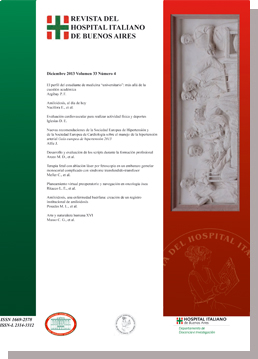NEW RECOMMENDATIONS OF THE EUROPEAN SOCIETY OF HYPERTENSION AND OF THE EUROPEAN SOCIETY OF CARDIOLOGY FOR THE MANAGEMENT OF HYPERTENSION 2013 EUROPEAN GUIDELINES ON HYPERTENSION
Main Article Content
Abstract
In June 2013 a new version of the European Guidelines on the management of arterial hypertension was released. The following summarizes some relevant topics for the daily management of the hypertensive patient. Among them, it is emphasized the role of measurements outside the office to identify and follow white-coat hypertension as well as masked hypertensive patients, and to differentiate pseudo-resistent from resistant hypertension. In this regard, it is rematked the utility of home blood pressure monitoring (HBPM) along with the 24-hour, ABPM for diagnosis and monitoring of BP, as a complement to office measurement. As a starting drug, no preference is given to any of the five major classes of antihypertensive agents individually, but a combination of angiotensin blockers plus a calcium channel blocker or a diuretic is favored, contraindicating the combination of two angiotensin blockers. It is proposed a flexible strategy for adjustment of treatment, whether monotherapy or a combination therapy is used, according to the degree of hypertension and the cardiovascular risk. In patients older than 65 years, drug treatment is recommended only above 160 mmHg systolic, although under 80 years antihypertensive medication could be initiated starting at 140-159 mmHg. As the goal for BP, this has been unified in 140/90 mmHg for low and high-risk hypertension. In elderly hypertensive patients, the therapeutic goal is 140-150 mmHg, while under 80 years the target could be considered
Downloads
Article Details
Section

This work is licensed under a Creative Commons Attribution-NonCommercial-ShareAlike 4.0 International License.

